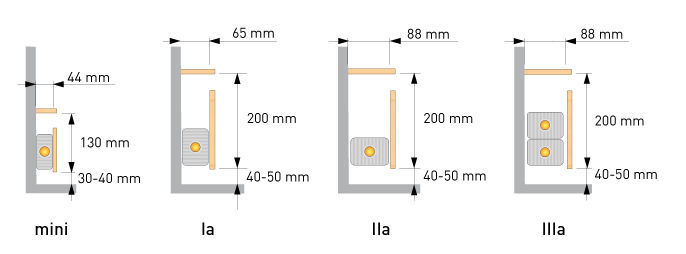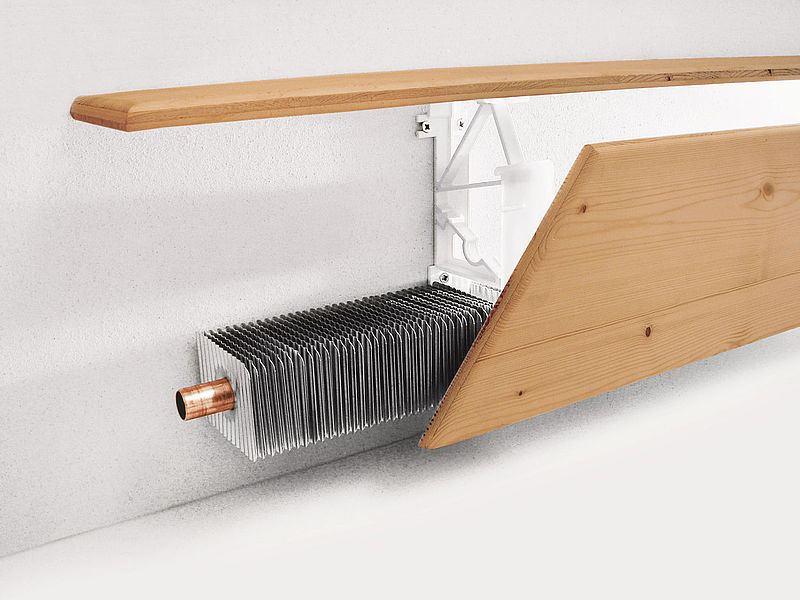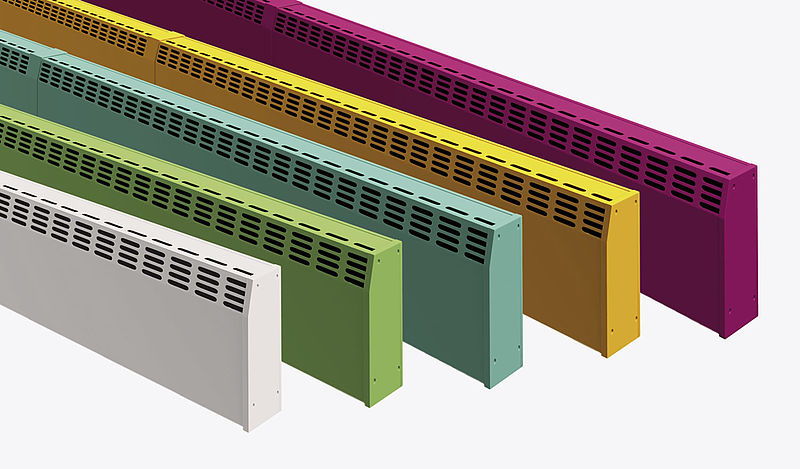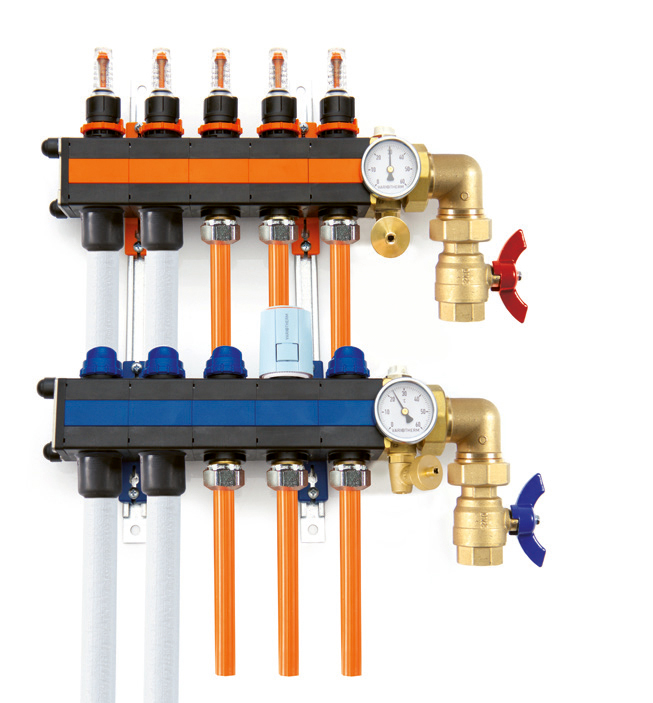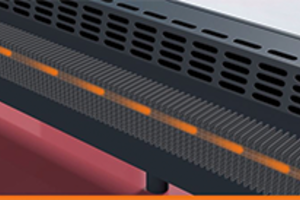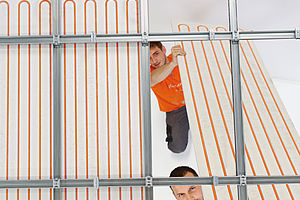Everything you need to know about the technology and installation
That's how Variotherm skirting heating works
Skirting heating systems regulate the temperature of walls. They are therefore installed along the entire outer wall when possible. The air flows through the skirting heating system from bottom to top and then, owing to the higher temperature difference, selects the area right next to the wall as a channel to ascend along. This is also known as the Coandă effect. While ascending, the air gives off heat to the wall. It then stratifies within the indoor air.
The heated wall surface becomes a radiant surface and a comfortable indoor environment is created. These infrared images show the rapid effect of Variotherm skirting heating systems. A veil of warm air is developed in just a few minutes. It blocks off the cold and heats the wall.

Temperature curve
The image shows the variation in temperature within the room of a home heated with a Variotherm skirting heating system, as measured by a calibrated temperature probe. It is easy to see that there is little difference in temperature between the floor and the ceiling.
The dashed lines indicate the apparent radiant heat as measured by the probe. It is significantly higher than the actual room air temperature. This proves that cosiness is already achieved at lower, energy-saving room air temperatures.
The Coandă effect
The gentle warm air veil circulates along cold surfaces in particular. The air is better distributed and only sinks slowly in the room. There is therefore no significant air circulation.
Variotherm skirting heaters are mounted directly on glass surfaces or cool walls. This enables a veil of warm air to quickly build up along the cold surfaces, leaving the cold outside.
Heating elements
High degree of efficiency. Efficient heating performance. The heating element developed by Variotherm is the technical core component of the Variotherm skirting heating systems.
The heating elements are the technical core component of the Variotherm skirting heating systems and were specially developed for it. They work highly efficiently and provide optimum heat output.
The heating elements consist of a copper tube ø 18 × 0.5 mm (DIN EN 12 449) with 56 × 78 mm aluminium louvres. The tube and aluminium louvres are connected by a special manufacturing process. This makes them particularly powerful.
Dimensioning

In the planning phase, not only selecting the right heating system is important. Information on building quality such as room size, ceiling heights, door and window sizes, construction materials and thermal resistance values are important when determining the heat requirements and the dimensioning of the skirting heating system.
When planning the sockets, ensure that they are located above the skirting heating. We recommend providing sockets at a height of 350§mm above the finished floor level.
The dimensioning of the skirting heating system depends on
- The flow temperature
- The required output
- The possible installation length
Planning the maximum flow temperature of the heating system is key to a healthy warmth provided by the skirting heating system. We recommend that the set-up temperature does not exceed 60 °C. Otherwise, the louvre temperature will be significantly above the dust carbonisation temperature, which can lead to unhealthy air. Best results are achieved with maximum flow temperatures of 50 to 55 °C.
Simple and quick to install
The skirting heating systems can easily be attached to all finished plastered walls, wood panels, niches, wall protrusions or window bases.
They can be installed by a single person: simply screw the bracket onto the wall and insert the heating elements. Then connect the heating elements and attach the cladding. That’s all there is to it.






